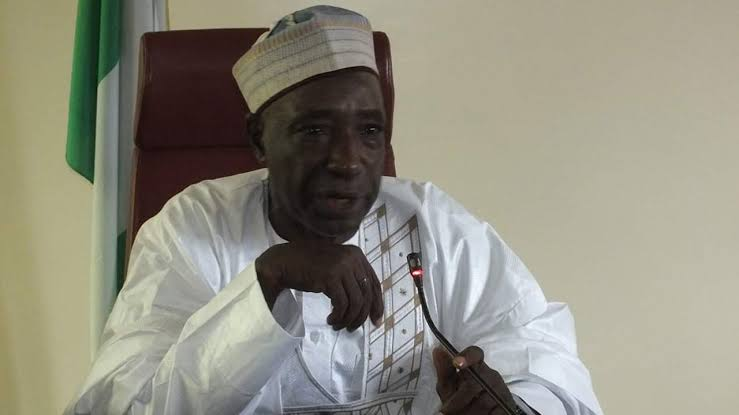52 ministers failed to achieve agric revolution in 54 years
Between 1966 and 2020, Nigeria has had 52 ministers of agriculture. But 54 years down the line, Nigeria’s agriculture has not changed much. Hoes and cutlasses still dominate production; animal traction still common in the north, only few commercial farms (mostly owned by foreign investors) are fully mechanised. Prominent among those who served as ministers […]

Minister of Agriculture and Rural Development, Sabo Nanono
Between 1966 and 2020, Nigeria has had 52 ministers of agriculture. But 54 years down the line, Nigeria’s agriculture has not changed much. Hoes and cutlasses still dominate production; animal traction still common in the north, only few commercial farms (mostly owned by foreign investors) are fully mechanised.
Prominent among those who served as ministers were Chief C.O. Komolafe, Otunba Bamidele Dada, Adamu waziri, Dr. Joe Okezie, Malam Adamu Ciroma, Chief Ola Awotesu, Prof Jerry Gana, Mrs Ada Adogu, Alh. Abubakar H. Hashidu, Chief Chris Agbobu, Dr. Shettima Mustafa, Dr. Grace Ogwuche and Dr. Malami Buwai,
Others are Dr. Garba J.A Abdulkadir, Dr. Hassan Adamu. Alh. Sani Zangon Daura, Dr. Sayyadi Abba Ruwa, Alh. Dr. Fidellia Njeze, Isa Muhammed, Alh. Bala Sokoto, Alhaji Adamu Bello, Dr Akinwumi Adesina and Chief Audu Ogbeh and the current ministers led by Alhaji Sabo Nanono
Although some of them like Jerry Gana stayed less than a year in office, Alhaji Adamu Bello had the longest time in office for a period of six years during the Obasanjo administration.
Despite these big names, agriculture suffers and some of the laudable innovations and initiatives that some of them introduced were jettisoned by successive administrations.
For example, the cassava bread initiative initiated by Adamu Bello and reinforced by Dr Adesina did not see the light of the day and the N10 billion Cassava bread fund remains unresolved.
Adesina also introduced the e-wallet system, which sought to deliver input to farmers directly instead of going through the middlemen but was set aside by Chief Audu Ogbeh because of the huge debts (about N76 billion) it inherited from the Jonathan administration.
Many experts believe that these ministers did not make conscious effort to spur the green revolution as India, Pakistan and Brazil had a situation that has left Nigeria’s agriculture largely the way it was practised in the first republic.
Dr Aliyu Samaila explained why Nigeria failed to achieve green revolution: “It is due to the same old reasons: low input/ low output, little or no mechanisation, heavy post-harvest losses.”
Professor Banji Oyelaran-Oyeyinka, Special Adviser on Industrialization to the President of the African Development Bank (AfDB), said Nigeria failed to achieve green revolution because of some Nigerian politicians who set aside laudable programmes for their selfish interest, adding that countries like India, Pakistan, Brazil and Vietnam, which were in the same state with Nigeria all had agricultural revolution.
According to him, the yield gap between Nigeria and Brazil is too wide, adding that for the nation “to sustainably feed itself, Nigeria must close the yield gap by using productivity enhancing technologies (improved seed, fertilisers, irrigation, mechanisation, etc).”
The current minister lays emphasis on mechanisation, many hope it brings the needed development to the ailing nation’s agriculture.
